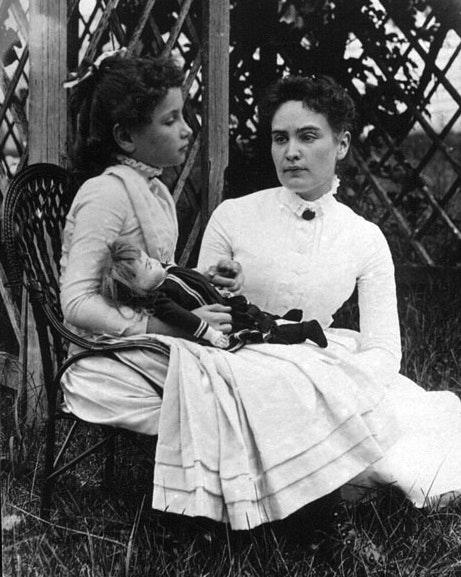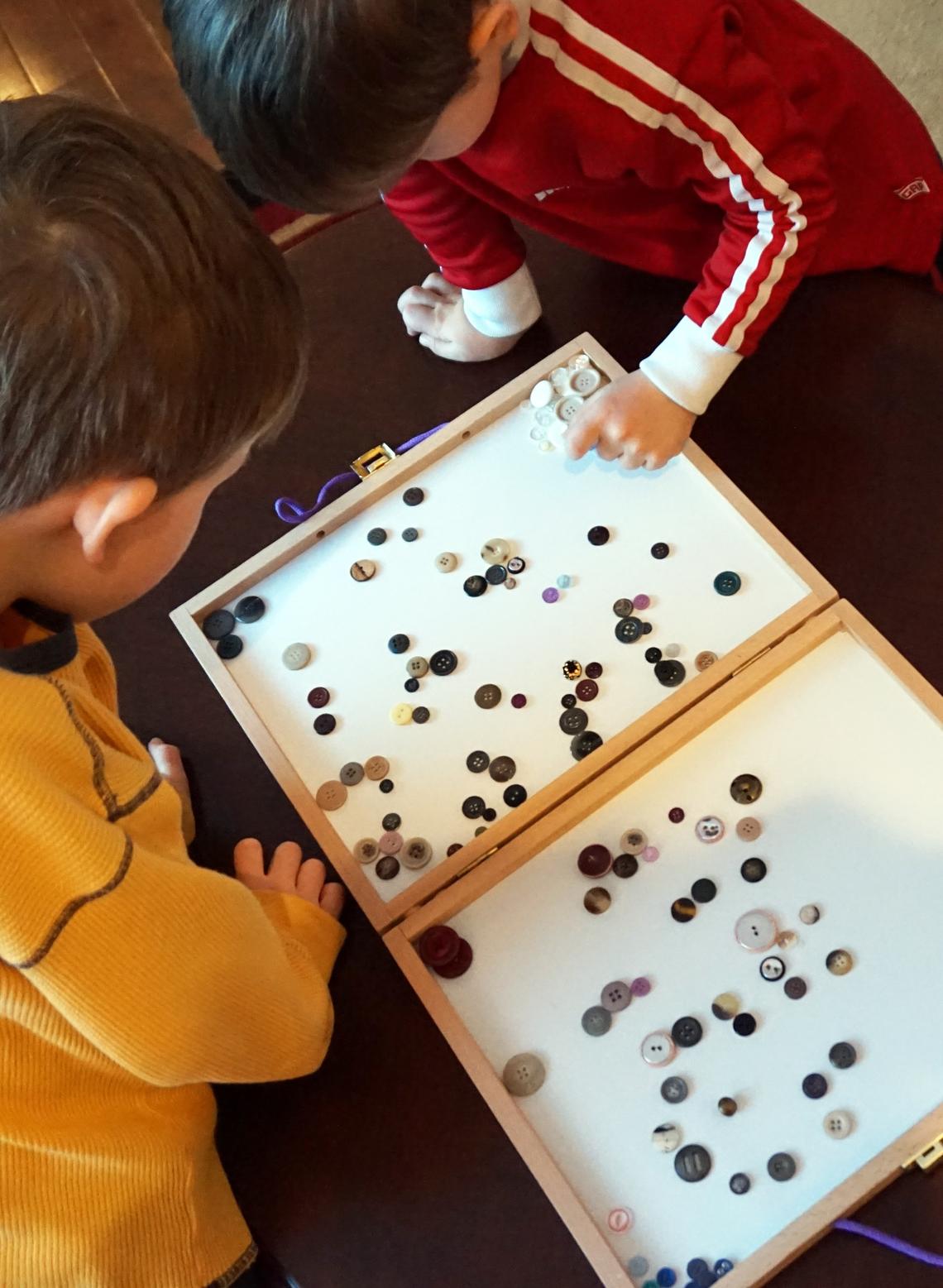Nov. 4, 2019
Writing and reading starts with children’s hands-on play

Perhaps evolution’s most wondrous manifestation is visible in the unparalleled elegance and versatility in the design of the human hand. The miracle of the hand-brain connection, a development that probably began about three or four million years ago, lies at the existential core of what it means to be human — that is, to have developed as toolmakers and language users.
Yet writing, a phenomenon of only the past 5,000 years, was a latecomer in human development. It required representational capacity and the dawning idea that a tool in hand could preserve our thoughts and share them across time and space.
The story of Helen Keller, rendered blind and deaf from a fever as a toddler, is a poignant testimony to the human capacity to find meaning through the hands and through language.

Helen Keller with her teacher, Anne Sullivan.
Wikimedia
It was Anne Sullivan, her teacher, who stayed by her side as a lifelong sojourner and unlocked the world. She gave Helen her freedom through a constant flow of finger-spelling into her young pupil’s hand.
Helen later wrote:
“That living word awakened my soul, gave it light, hope, joy, set it free!”
Hands-on learning
The hands attach humans intimately to the grand adventure of our Earthly existence. The child’s first 2,000 days are full of adventure, discovery, making connections and learning the world — especially through the hands. In turn, the child is laying down the bundles of neuro-circuity in the cognitive, linguistic, motor domains that underpin literacy.
Language in these early moments of life, provided mostly by parents or primary caregivers, is what supports these processes. It is through back-and-forth, or “serve-and-return” kinds of conversations that such language grows. With attentive adults who take an interest in children’s hands-on learning, children grow and gain capacities to be ready for school and to keep up with school.
There is no question that we live in the 21st century of digital devices that compete for a child’s time and attention that open other possibilities for knowing and learning. But the digital world can wait.
There is no substitute for physical play, language, adult engagement and the crucial hand-brain connection that underpins all that is to come.
Motor skills and literacy
Gripping and pushing a pencil to convey meaning on the page is more than a simple motor skill. Rather, it requires marshalling a host of neuro-motor, cognitive and linguistic resources — whether children can retrieve the vocabulary they have and get it on the page. For our youngest learners it starts with nimble fingers.

Sorting buttons.
Hetty Roessingh
Fine motor skills are those involving the small muscle groups in the hands, fingers and wrists that are needed for gripping and grasping. In turn these are used for handling pencils, erasers, scissors and cutlery, for example. Precision and co-ordination of these small muscles is so important to school readiness.
The Ages and Stages Instrument, a screening tool to detect children’ developmental abilities, expects a five-year-old to be able to cut a straight line, copy shapes and draw a figure.
Many children not prepared
In Alberta, data from 2009 to 2013 found that almost a quarter (24 per cent) of all children entering kindergarten were not meeting benchmarks for physical health and well-being. This benchmark includes fine motor skills.
Similar results are corroborated in 2019 pan-Canadian data: 27 per cent of youngsters at age five aren’t meeting readiness benchmarks upon their arrival in kindergarten. Among children raised in poverty, this figure increased to 36 per cent.
Schools collect this data through a screening tool that captures children’s development in different areas: physical health; social competence; emotional maturity; language and cognitive development; communication skills and general knowledge.
When students get a slow start, they don’t necessarily catch up. Our research findings from a study of Grade 2 students in Alberta indicate a lack of control over printing that impedes students’ abilities to put words on the page. Another study we conducted of Grade 3 students similarly suggests room for improvement.
Hand to mouth
In grades 3 and 4, the transition to academic literacy development and vocabulary knowledge becomes increasingly important. But this can only be unlocked if handwriting is under control and students have a foundation of vocabulary, nurtured partly through hands-on learning.
The acclaimed psychologist Jean Piaget aptly described how children’s sensory motor developmental stage requires “concrete operations.” Children have a fundamental need to take in and learn their world through direct contact, principally with their hands, in real time. This matters for learning how to reconstruct the external world into internal representations — and to name these with language.
Such learning occurs through continuous, sensitive windows of opportunity that open and close as children become ready for more experiences. Visually mediated simulations on a screen are no substitute for this direct experience.

Parents’ talk with children helps solidify children’s budding learning.
Shutterstock
Nature and nurture interact in a complex ecology. The Russian psychologist Lev Vygotsky taught the importance of the socio-cultural contexts in which children develop and learn with someone more experienced. With encouragement and talking together, children master budding skills when they receive just enough challenge to take the next step.
Vocabulary growth helps predict a child’s success with reading. It is not only the quantity of words that matter, but also the range of words and the quality of the interactions that matter.
Internalized knowledge
The child’s first 2,000 days are precious ones that teachers cannot “pay back” once lost.
A deep pool of internalized knowledge is necessary for children to become critical thinkers, problem solvers and savvy, literate users of language. The single biggest predictor of what children will learn next is what they already know. Access to Google doesn’t count.
Inadequate literacy skills hurt individuals’ potential for opportunity and a globally connected, complex, competitive knowledge economy demands high literacy outcomes. The critical skills of reading, writing, communicating, filtering and analyzing information are ever-important in our complex world.
It all starts with nimble fingers.
Deep knowledge, daily. Sign up for The Conversation’s newsletter.





